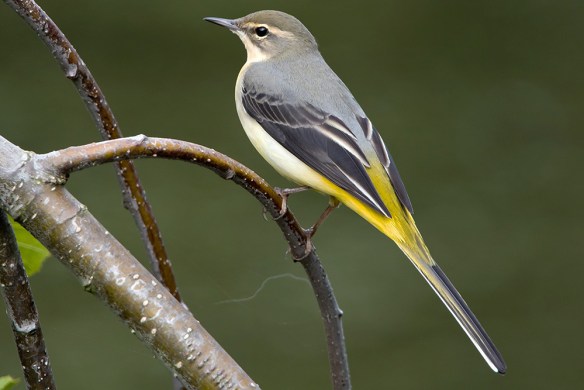By Liz Corry
Jersey’s annual Great Garden Bird Watch returned some interesting results this year. Held on 5th and 6th February, Islanders were asked to spend an hour in their garden and list all the birds they could see.
For the first time in its twenty-one year history, choughs were recorded. Not only that, they were spotted on a bird feeder filled with peanuts, sunflower hearts, maize, pinhead oatmeal and millet.
After digging a little deeper, we discovered that some of the choughs have been visiting this garden since 2020. The photos submitted identified breeding pair Trevor and Noirmont, prior to that, we know a young female has also visited with the pair.
Whilst surprising, it is not unheard of for wild choughs to use bird feeders. There are a few of reports from Cornwall and Wales of chough opportunistically feeding from garden bird feeders. In each case including Jersey, the gardens are not your typical urban estate fenced-in garden. Trevor and Noir have been visiting property at Grantez which surrounded by grazed land (sheep, horses, and donkeys). From Grantez’s vantage point, you can see the entire west coast from L’Étacq to Corbière, both areas favoured by choughs.
The interesting information from this report is the type of food they are eating. Pinhead oatmeal forms part of the supplementary diet provided to Scottish choughs in Islay. Its not considered as typical wild chough diet, but does suggests there is something in the mix that the birds are looking for. We are hoping to carry out research into diet preferences in the near future. This exciting discovery is certainly food for thought.
Sorry.
Foraging further afield
As mentioned above, the choughs have been visiting Grantez. In addition to the garden report, the National Trust Rangers have seen choughs foraging near the dolmen on Grantez headland.
Choughs are also visiting Corbière, Les Mielles dunes, and potentially back at Crabbé where a pair roosted in 2020. The gun range, sheep-grazing, and now goat-grazing, provide great habitat for choughs to find food. Farm structures and cliff faces offer ample nesting opportunity for a pair looking to setup a new territory.
We are also keeping our eyes peeled around Trinity again. There is a good chance Pinel might try to set up a territory again this time with his new female. The roost site used in 2021 is surrounded by horse paddocks which provide foraging opportunities and nesting material – choughs sometimes use horse hair!
Catch-ups with the choughs
We finally managed to trap the elusive Bo and Flieur in the aviary to replace their leg rings. I say elusive, but I could equally use stubborn/clever/annoying/uncooperative… This is the pair who always fly to the aviary with the others yet refuse to go inside when they know we are trying to catch choughs. Bo in particular keeps both eyes firmly fixed on staff. Flieur might break once in a while and tempt fate, but flees at the first inclination that the hatches might be about to close.
I struck lucky on Monday 7th when all thirty choughs turned up for the feed all showing signs they were hungry. Typically had to be the day I was working alone although maybe that is why Bo’s guard was down.
I replaced Bo’s missing plastic ring and swapped Flieur’s faded pale grey for something more obvious. It felt wrong. No one likes change. Flieur has been grey since she arrived at Sorel. Grey is her identity.
It’s also a really stupid colour to use in the wild in a climate where grey skies prevail. So out with the grey in with the mauve.

Flieur’s new mauve leg ring sets her apart from the other 2014 (blue) hatched birds. Photo by Liz Corry.
Storm damage at Sorel
The Island has seen its fair share of storms this year. February’s Storm Eunice and Franklin delivering devilishly strong winds (55-63 mph or 89-102 km/h). Yet somehow the aviary miraculously remains standing.
The winds did create new rips in the netting and annoyingly re-opened ones we had sealed last month. Another trip to Sorel with the Henchmen ladder is in the pipeline. We have budgeted for new netting to be fitted later in the year. Hopefully the current net will hold out until then.
What didn’t remain standing was the Birds On The Edge sign at Sorel car park. Cue a phone call on my morning off followed by a spot of coastal ‘carpentry’. I couldn’t unscrew the sign from the posts to fit it in the car so the logical solution…saw off the posts! In my defence, they were rotten at the base, and we reused the wood at the aviary. The sign and fencing will be replaced by the Countryside Rangers in the near future.
Grazing returns to Sorel
Very pleased to see the return of the Manx loaghtans to Sorel this month. Perfect timing for the choughs who will soon need wool to line their nests.
It also means we should hopefully see the return of dung invertebrates (aka chough food) who depend on the sheep faeces. Not sure which made me more excited, the choughs foraging in amongst the sheep or the return of mating dung flies. If you haven’t already, please checkout our article about Dung Beetles for Farmers.
Avian influenzas confirmed in Jersey
Two wild buzzards have tested positive for avian influenza: the first confirmed cases in Jersey. This was followed shortly by the death of a red-breasted goose in the Zoo who also tested positive for the strain H5N1.
Choughs are considered to be at low risk of infection, and we do not foresee any major changes in how we manage the supplementary feeds. To reduce the chance of transmission between field sites and the Zoo, we have set up a disinfectant foot bath at the aviary with dedicated footwear. We continue to maintain high hygiene standards at the aviary and have separate footwear for in the Zoo and out in the field.
We will of course monitor the situation and consult with the States Vet if any changes occur.

























































